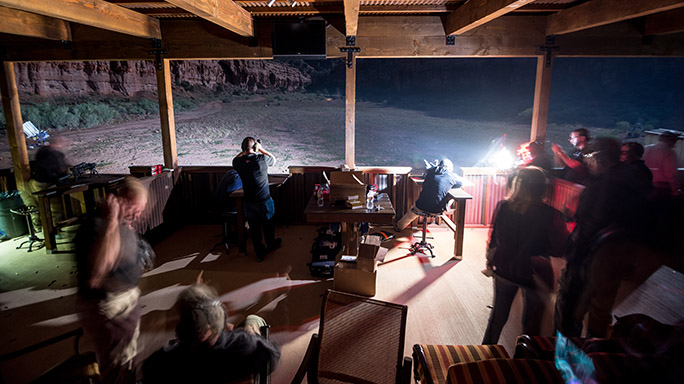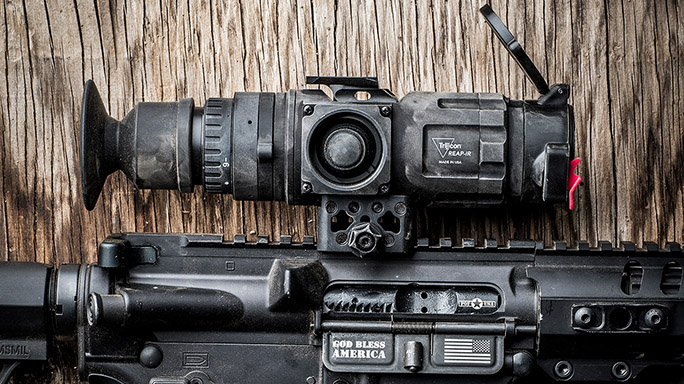During the night shoot portion of the Special Forces Sniper Course, we experimented with different thermal and night vision capable optics. It was my first experience with thermal optics before, so I was eager to see how well they performed when shooting out to mid-range.
Unfortunately, disappointment followed. For the most part, I found myself unimpressed with the clarity of resolution presented with the available thermal optics. Although I could differentiate between terrain and targets, I didn’t feel confident that I’d be able to tell the difference between a man at distance that was carrying a garden rake, or an RPG tube.
RELATED STORY — Reflex Strike: Trijicon’s MRO Miniature Rifle Optic
Advertisement — Continue Reading Below
A few months later, I shipped out to Iraq and only used night-vision optics. Meanwhile, my thermals sat in my wall locker collecting dust.
Today, almost 12 years later, the quality of resolution in thermal optics — such as the Trijicon REAP-IR mini thermal riflescope — has improved drastically. In fact, the International Traffic in Arms Regulation (ITAR) protects the clarity of the image resolution.
Although it is not uncommon for most weapon systems or optics to receive a blanket ITAR restriction, the argument could be made that the REAP-IR justifies protected status because of its enhanced image clarity.
Advertisement — Continue Reading Below
Trijicon REAP-IR on the Range
I got my hands on the Trijicon REAP-IR at the recent Athlon Outdoors Rendezvous in Gateway, Colo.
Pulling from my previous experiences with earlier generation thermal technology, I shot the REAP-IR out to mid-range at distances varying between 100 to 200 yards. I was able to easily identify BC-zone size steel. However, more importantly, I was able to distinguish the detail of terrain surrounding the targets.
Satisfied with the performance on silhouette size steel from CTS Targets, I transitioned to shooting six-inch steel plates. Holdovers on thermal scopes are more difficult to accomplish than on just optical glass. Why? Because our eyes transition from true clarity to a digital looking image.
Advertisement — Continue Reading Below
When shooting for very small margins of accuracy, clarity may betray our eyes. The result is that we hold slightly too far off of our intended mark. Out to 200 yards with the REAP-IR, I did not have this issue with six-inch plates in 5-7 mph winds.
RELATED STORY — Trijicon Unveils the New RMR Type 2 Reflex Sight
At $7,999, the REAP-IR’s price point places it out of reach for most enthusiasts. Hunters with big budgets have a new thermal. However, more than not, law enforcement and military units are the primary end-users for this optic.
Advertisement — Continue Reading Below
I reached out to snipers in various law enforcement and military organizations. They’ve confirmed that thermal sniper optic technology has caught up with actual mission demands, and that we are a decade removed from having a capability that afforded no technical advantage.
For more information on the Trijicon REAP-IR, please visit TrijiconEO.com.



























